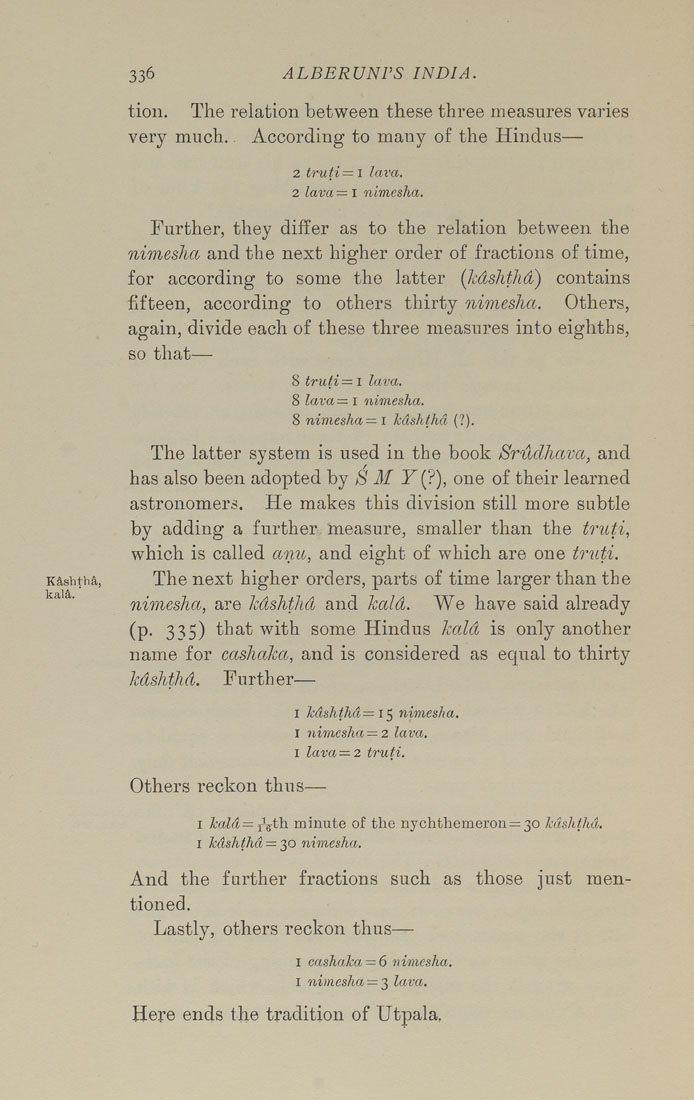Bīrūnī, Muḥammad ibn Aḥmad, Alberuni's India (v. 1)
(London : Kegan Paul, Trench, Trübner & Co., 1910.)
|
||
|
|
|
|
| Page 336 |

336 ALBERUNPS INDIA. tion. The relation between these three measures varies very much. According to many of the Hindus— 2 truti = 1 lava. 2 lava = I nimesha. Further, they differ as to the relation between the nimesha, and the next higher order of fractions of time, for according to some the latter (kdshthd) contains fifteen, according to others thirty nimesha. Others, again, divide each of these three measures into eighths, so that— 8 truti = I lava. 8 lava= I nimesha. 8 nimesha = i kdshthd (?). The latter system is used in the book Sr'ddhava, and has also been adopted by S M Y(f), one of their learned astronomers. He makes this division still more subtle by adding a further measure, smaller than the truti, which is called anu, and eight of which are one truti. KAshtha, The ucxt higher orders, parts of time larger than the nimesha, are kdshthd and kald. We have said already (p. 335) that with some Hindus kald is only another name for cashaka, and is considered as equal to thirty kdshthd. Further— I kdshthd=i^ nimesha. I nimesha = 2 lava. I lava =2 truti. Others reckon thus— I Jcald= ^^th minute of the nychthemeron = 30 kdshthd. I kdshthd = 2iO nimesha. And the further fractions such as those just men¬ tioned. Lastly, others reckon thus—• I cashaka = 6 nimesha. I nimesha = 2, lava. Here ends the tradition of Utpala, kala. |
| Page 336 |







